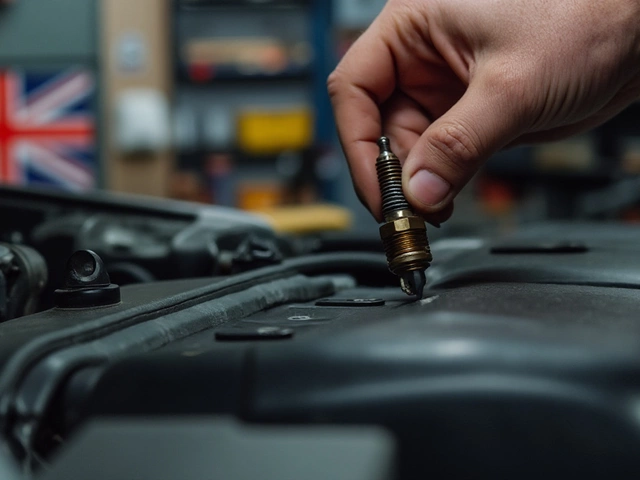10W30 Engine Oil – Simple Facts and Practical Tips
Got a bottle of 10W30 and wonder if it’s the right choice? You’re not alone. Many drivers see the numbers and just guess. In this guide we break down what 10W30 actually means, when it’s a smart pick, and how to get the most out of it without breaking the bank.
When to Use 10W30 Oil
10W30 is a multi‑grade oil. The ‘10W’ part tells you how the oil flows when the engine is cold – lower numbers mean easier starts in winter. The ‘30’ shows the thickness when the engine is hot. If your owner’s manual lists 10W30 or a range that includes it, you’re good to go.
Typical candidates are small‑to‑mid‑size cars with four‑cylinder engines, especially those that run in moderate climates. It’s also a common recommendation for older engines that have a bit of wear – the extra thickness at operating temperature helps keep clearance tight.
Don’t use 10W30 if your car calls for a thinner oil like 5W20 in hot summer conditions; the engine could run hotter and lose fuel efficiency. Likewise, high‑performance or turbocharged engines often need a stronger 10W40 or a full synthetic blend.
Choosing the Right 10W30 Brand
Not all 10W30 oils are created equal. Look for a product that meets the API (American Petroleum Institute) ‘SN’ or ‘SM’ rating for gasoline engines. If your car is a diesel, you’ll need a ‘CJ‑4’ or ‘CK‑4’ rating instead.
Synthetic oils usually cost more but give better protection at extreme temps and last longer between changes. If you drive a lot or haul heavy loads, a synthetic 10W30 can save you from engine wear. For everyday commuting, a high‑quality conventional oil works fine and keeps costs down.
Read the label for additives like detergents, anti‑wear agents, and corrosion inhibitors. Brands that advertise “full‑synthetic” and “high‑performance” often include these extras, which help keep the engine clean and running smooth.
Finally, compare prices at local auto parts stores or online. Sometimes a bulk purchase will shave off a few pounds, but don’t sacrifice quality for a cheap knock‑off. A bad oil can cause a build‑up of sludge, which hurts more than a slightly higher price.Now that you know when to use it and how to pick a good bottle, here’s a quick step‑by‑step for changing the oil yourself.
1. Warm up the engine for a few minutes – warm oil drains faster. 2. Locate the drain plug, place a pan underneath, and remove the plug. 3. Let the old oil fully drain, then replace the drain plug with a new washer. 4. Remove the old filter, lubricate the new filter’s seal with a bit of fresh oil, and screw it on snugly. 5. Pour the recommended amount of 10W30 (usually about 4‑5 L for most small cars) into the filler tube. 6. Check the level with the dipstick after a minute, add more if needed, and clean up any spills.
Changing your oil every 5,000‑7,500 miles (or as your car’s service guide says) keeps the engine humming and can extend its life by years. If you’re not comfortable doing it yourself, a local garage can handle it quickly – just make sure they use the right 10W30 grade.
Bottom line: 10W30 is a solid, all‑round oil for many everyday cars. Match it to what your manual says, choose a reputable brand, and change it regularly. Your engine will thank you with smoother starts, better fuel economy, and fewer surprises down the road.
 26 March 2025
26 March 2025
What Happens If I Use 10w30 Instead of 5w30?
Choosing the right engine oil can feel like an overwhelming task, especially with all those numbers and letters on the bottle. Wondering what happens if you put 10w30 instead of 5w30? This article explores the differences, how they can affect your engine's performance, especially in different weather conditions, and why manufacturers prefer certain grades. If you're tinkering in your garage or just trying to extend your engine's life, understanding these oil grades is a step in the right direction.
Latest Posts
-

How to Fix a Slipping Clutch Without Replacement: Proven Tips and DIY Solutions
-

Signs Your Spark Plugs Need Replacing and Tips for Maintenance
-

Diagnosing Fuel System Issues: Fuel Filters vs. Fuel Pumps
-

Is it Cheaper to Resurface or Replace Rotors? Real Costs for Your Brakes
-

How Long Does a Clutch Last After You Smell It Burn? Real-World Lifespan and Advice

0